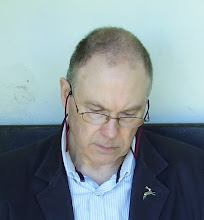It is rare to find a book in which all the elements come together so perfectly. The simple design of the actual book. A cover that exactly matches the content and overall feel of the novel. A translation that captures the spirit of the original as well as being accurate. And at its core, a novel that actually lives up the praise from the TLS quoted on the rear cover: ‘A postmodern literary masterpiece.’
I’m not au fait enough with literary terminology to know whether the book is modernist, postmodernist, pre-postmodernist, or just old fashioned ‘written recently in a style best suited to the particular story to be told’. What I do know is that it has the power of myth, the charm of a fairy tale, the complexity and clarity of the best literature.
Set two hundred years after a catastrophe known as The Blast, this tells the tale of Benedikt who lives in an unnamed enclave. Free of mutations, he works as a clerk copying books and lives a simple life. His world, however, is far from simple. It is partly a land of fairytale, complete with monsters; partly a dystopian landscape where memories of life before The Blast are confusing echoes in a neo-medieval world.
Full of playful ambiguity, humour and beautifully drawn characters, this work dances. It is true that owes much to a Russian cultural landscape, but you do need to know anything about that to appreciate what is a sublime portrait of human existence. There are haunting scenes, simple and touching without ever being sentimental. It is a wonderful literary experience, not least because the language is beautiful. You don’t often find a work that explores such fundamental issues that is also an easy read. This is in part due to the superb translation, but mostly due to the style – a deceptively homely approach that is rich and inventive.
If you worry that the novel has become dull, is dying, dead, or otherwise irrelevant, try this.
Thursday, 6 October 2011
Subscribe to:
Comments (Atom)


